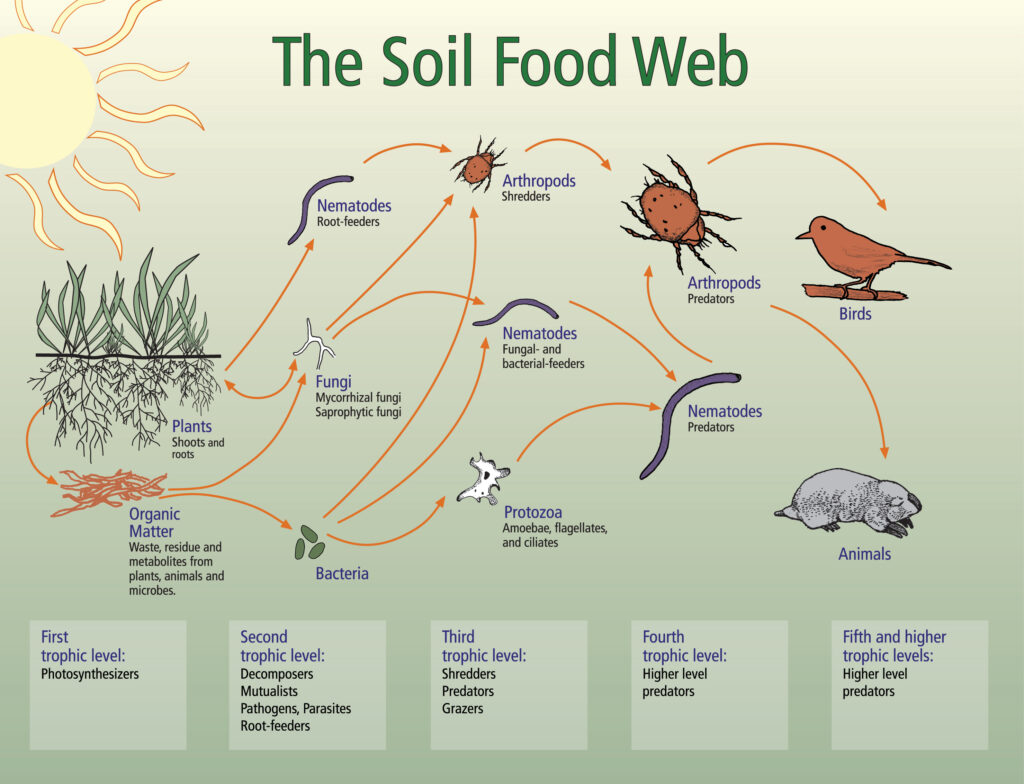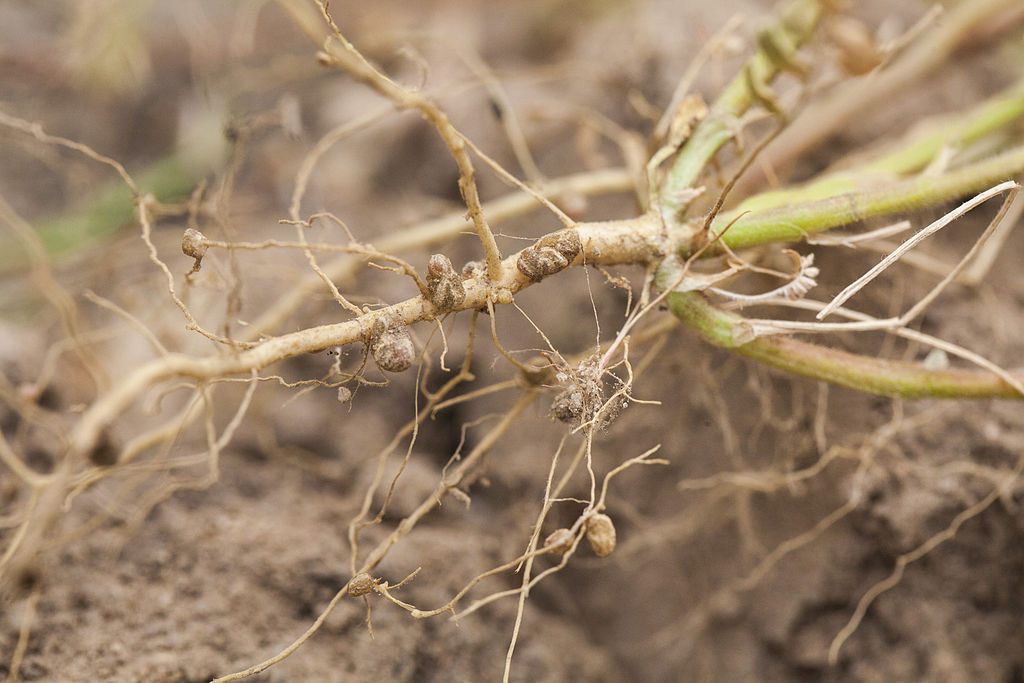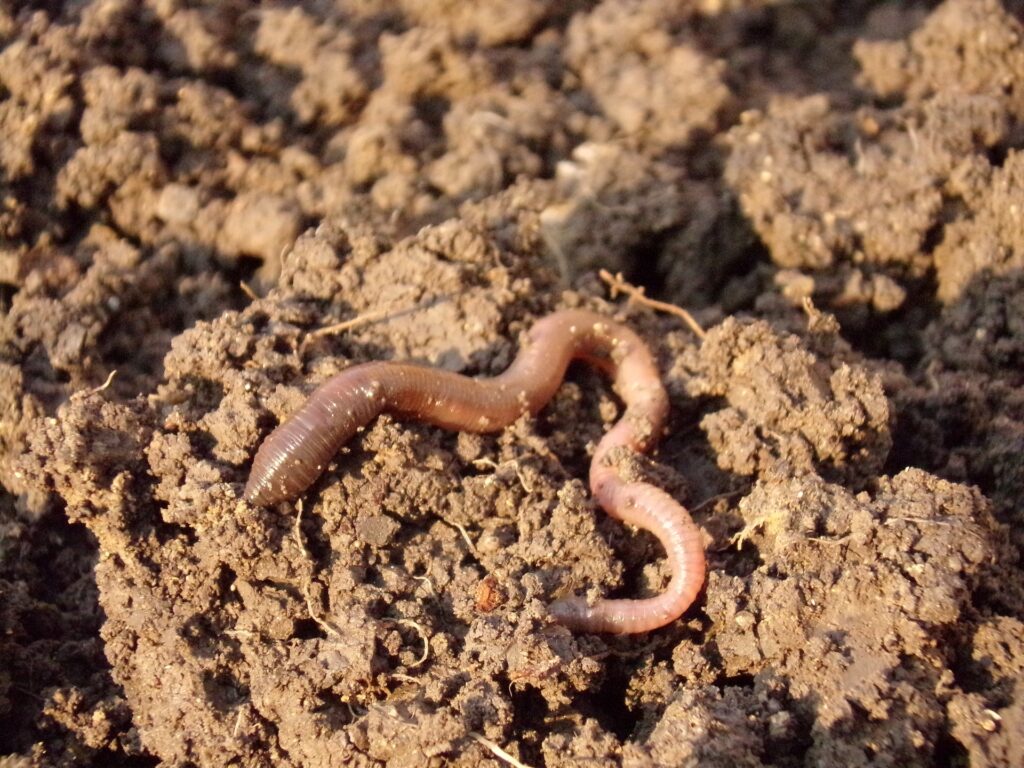Exploring an Amazing Underground World: Soil Function & Biology
By Carrie Brown, Engineering Technician
Join us for Part 1 in this exciting series as we investigate the many important functions of soil and the hidden biology behind it!
You may not know it, but there is an entire world that exists under your feet that is as grand and complex as any ecosystem you may find on the surface of the Earth.
Like all other ecosystems, it is composed of plants, animals, and fungi, along with a few organisms you may not be quite as familiar with such as protozoans and nematodes.
Though it is often overlooked, this world is responsible for providing us with clean water & air, diverse forest ecosystems & wildlife, and the majority of the world’s food in the form of crops and grazing land for meat production.
Soil provides a basis for all life and has many essential functions.
What is Soil?
Soil is a complex blend of minerals, water, air, organic (living) materials, and the decaying remains of once-living organisms.
As formally defined in the Soil Science Society of America Glossary of Soil Science Terms, soil is:
1. The unconsolidated mineral or organic material on the immediate surface of the earth that serves as a natural medium for the growth of land plants.
2. The unconsolidated mineral or organic matter on the surface of the earth that has been subjected to and shows effects of genetic and environmental factors of: climate (including water and temperature effects), and macro- and microorganisms, conditioned by relief, acting on parent material over a period of time.
Because plant life is dependent upon this underground ecosystem as a growing medium, there would be no food without it. This is just the beginning, however, as soil has many other essential functions:
Soil is essential for life as we know it on this planet. Let us take a closer look at this complex environment.
Soil Biology
Did you know that there are more microorganisms in a teaspoon of healthy soil than there are people on this planet?
Though we cannot see it with the naked eye, soil is teeming with a great diversity of life.
If you think back to elementary school science class, you may remember the concept of a food web.
A food web is a representation of how organisms are related to each other based on what they eat.
And you might recall that the source of the energy getting passed along is the Sun. Plants are able to utilize the Sun’s rays to make food for consumers, such as humans.
It turns out that within the soil there are numerous organisms that are also dependent upon plants and many assist plants in making this energy transformation.
Let’s take a look at some of the major players:

Soil Bacteria
Though very tiny, bacteria are abundant in soil and serve many essential functions. Most bacteria are decomposers and play the important role of transforming dead matter into a form that can be used by other organisms in the food web. Some can even break down pesticides and pollutants in the soil.
Additionally, many people are aware of the symbiotic relationship some bacteria form with the roots of legumes such as soybean and clover, ultimately transforming nitrogen from the air into a form that other plants can utilize.

Soil Fungi
Most of us think of mushrooms when we hear the word fungi. If we think of fungi in terms of an apple tree, the apple is represented by the mushroom, also called the fruiting body. Fruiting bodies produce spores rather than the seeds found inside of an apple, but the purpose is the same: to ensure that there are future generations.
The apple is only a small portion of the apple tree, just like the mushroom is only a small portion of the fungus. But rather than having a large structure above the ground such as a tree, most of the fungus organism is found below the ground! In fact, a single fungus is a complex underground tangle of strands that can cover areas even larger than a baseball diamond.
Soil fungi have a variety of functions in the food web including nutrient-cycling. As such, fungi will colonize the roots of plants, essentially extending the plant roots’ reach, allowing it to obtain important nutrients, such as phosphorus, that would normally be out of grasp. In return, the fungi are supplied with carbohydrates from the plant. This symbiotic relationship is essential for healthy plant function.

Soil Arthropods
Ranging in size from microscopic to several inches long, there are many species of bugs that call the soil home. While some act as pests consuming live plant matter, most consume fungi, worms, or other arthropods.

As they feed, arthropods aerate and mix the soil, regulate the population size of other soil organisms, and shred organic material.
This is not an exclusive list of soil-dwelling organisms, however. There are many types of single-celled soil protozoa, primarily feeding on bacteria. Additionally, tiny worms called soil nematodes exist and can be both beneficial and detrimental.

And one cannot forget to mention the most notorious soil resident, the earthworm. These critters benefit crop production in many ways such as mixing and aggregating soil, increasing water filtration, and providing channels for root growth.
Join us in 2021 as we take a look at assessing the health of your soil and review tips on maintaining soil health.



